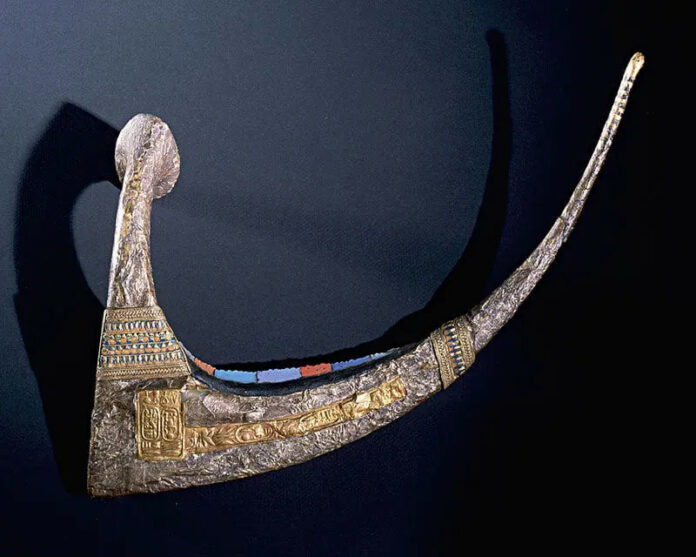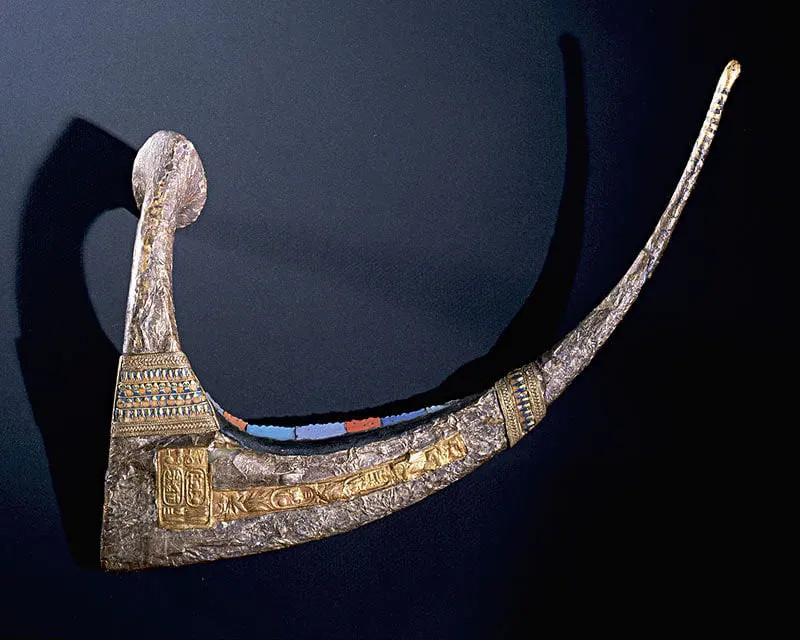Among the many treasures discovered in Tutankhamun’s tomb, one artifact stands out not only for its craftsmanship but also for its deep symbolic meaning—the golden sickle. This exquisite tool, crafted from gilded wood and adorned with colored glass, was not merely a ceremonial object but a bridge between life and the afterlife.
The Significance of the Golden Sickle in Ancient Egypt
Agriculture was the foundation of ancient Egyptian civilization, and the sickle played a crucial role in sustaining both the economy and religious beliefs. The annual harvest was not just an agricultural event but a sacred ritual tied to the gods. The presence of a golden sickle in Tutankhamun’s tomb suggests that this tool had both practical and spiritual importance.

A Tool of Kingship and Divine Favor
During his reign, Tutankhamun would have participated in the Peret harvest festival, a significant ceremony where the pharaoh symbolically reaped the first grains of the season. This act was performed in honor of Osiris, the god of fertility and resurrection, reinforcing the divine connection between the king and agricultural prosperity. The golden sickle in his tomb likely reflects this ritual, underscoring his role as the provider of abundance for his people.

A Weapon Against the Trials of the Afterlife
Egyptians believed that the journey through the afterlife was fraught with challenges, requiring magical tools for protection. The golden sickle was more than an agricultural implement; it was a symbol of power and defense. Some scholars suggest that it was meant to ward off evil spirits and cut through any obstacles that might hinder the pharaoh’s passage through the Duat (the underworld).

Additionally, ancient texts describe the afterlife as a realm where the deceased needed to harvest celestial grains for sustenance. By placing the sickle in Tutankhamun’s tomb, priests ensured that he would continue to be nourished in eternity, reflecting the Egyptian concept of heka (magic), which granted divine protection and sustenance beyond death.
The Evolution of Ceremonial Sickles in Egyptian Tombs
The inclusion of sickles in tombs dates back to Egypt’s early Dynastic Period. Initially, they were simple tools with wooden handles and flint blades, but by the time of the New Kingdom, they had transformed into lavish, gilded objects designed for ceremonial and funerary purposes. Tutankhamun’s golden sickle represents the peak of this evolution, blending practical use with profound spiritual significance.
Conclusion: More Than Just a Tool
Tutankhamun’s golden sickle is a striking example of how the ancient Egyptians merged the material and the mystical. While it symbolized agricultural prosperity in life, it also functioned as a protective and magical object for the pharaoh’s journey into eternity. This artifact serves as a reminder of how deeply intertwined daily life, kingship, and religious beliefs were in ancient Egyptian culture, ensuring that their rulers were well-prepared for both this world and the next.

